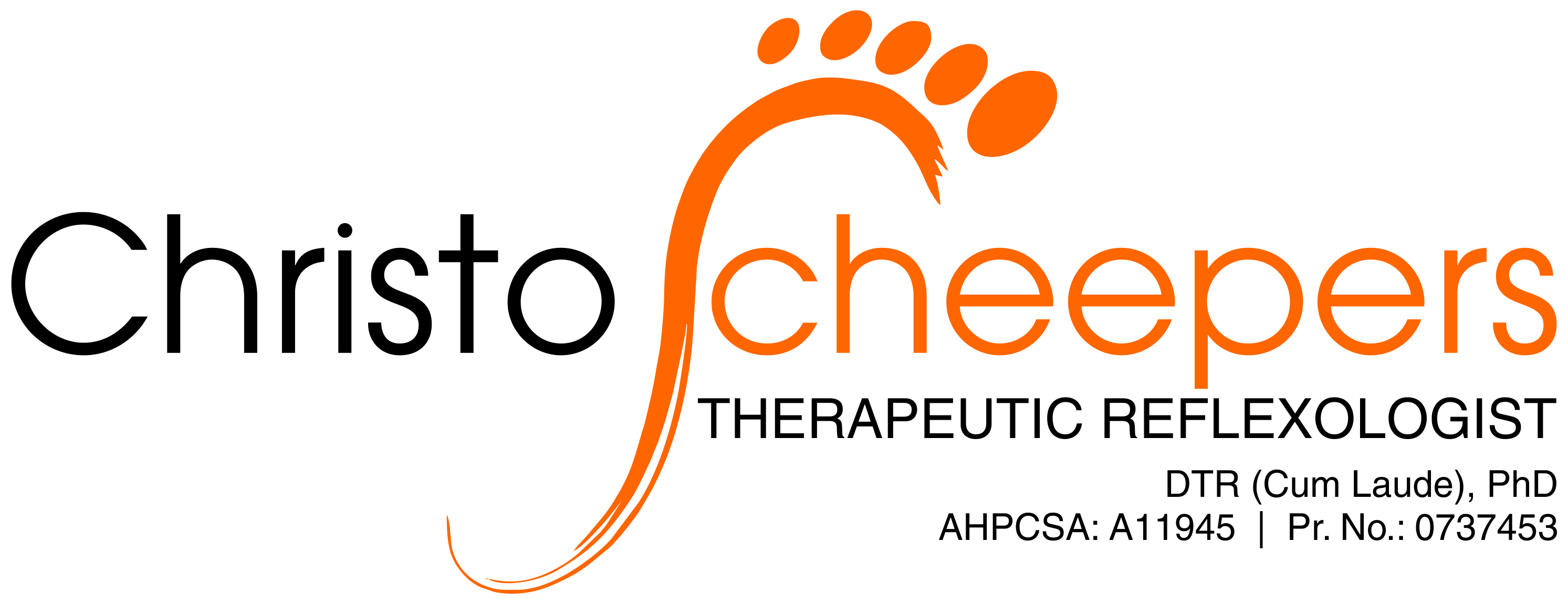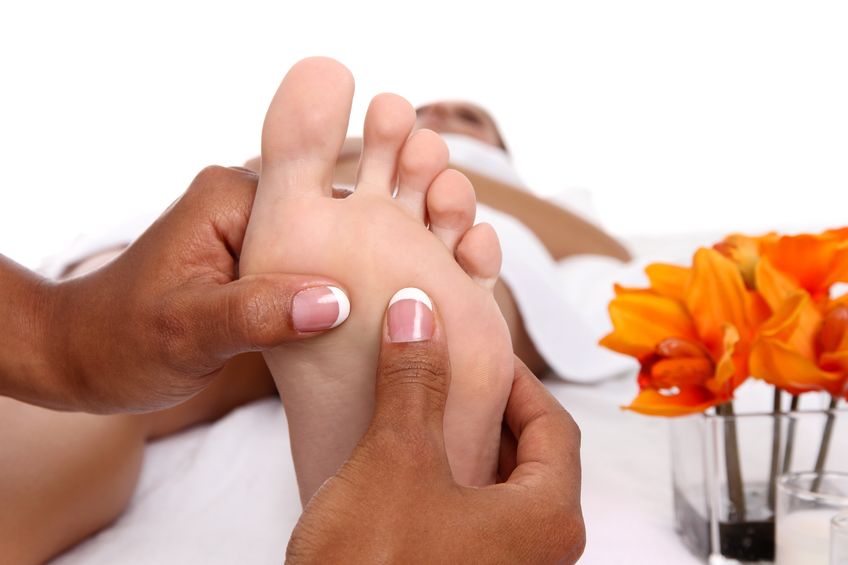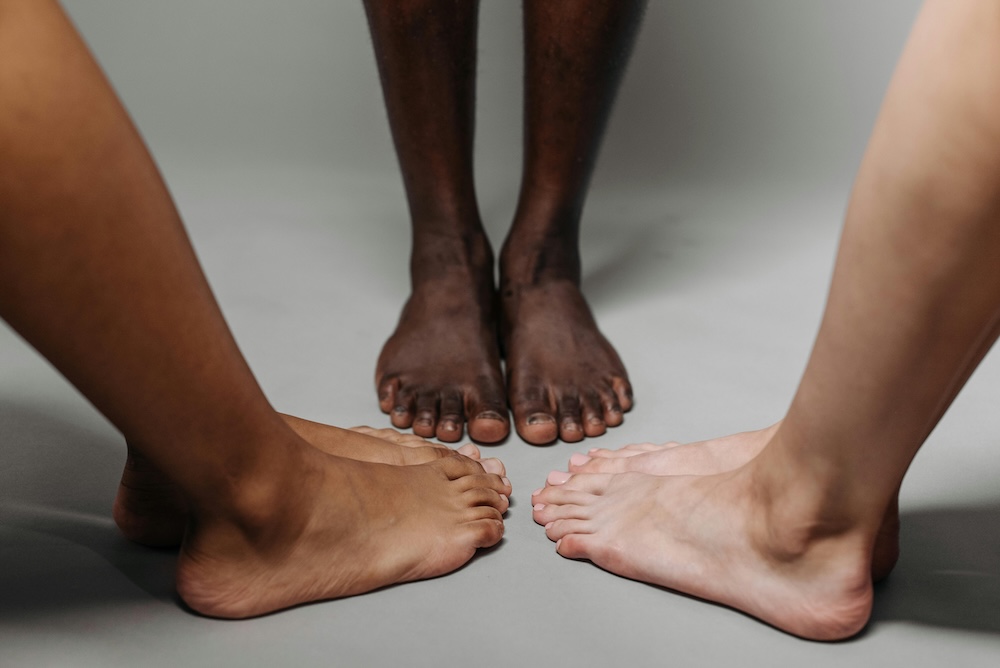In today’s post, we are delving into a matter that is usually reserved for the fields of psychology and psychotherapy, namely, feelings the patient places on the Therapeutic Reflexologist, or reciprocal feelings the therapist places on the patient, but we are going to take it on from a Therapeutic Reflexology perspective.
With that said, the concepts of transference and countertransference may make an appearance in a Therapeutic Reflexology session, but usually that is not something that is considered, and as far as I can remember, that was not even vaguely covered in the professional training of a Therapeutic Reflexologist. Thus, there is a need to at least write a short blog post article about it to provide a basic resource to Therapeutic Reflexologists and other healthcare providers, but also to patients that may want to read a bit more about these concepts and how it may impact their treatment sessions.
I have been very privileged during the past year to provide Therapeutic Reflexology to various healthcare providers, namely: Biokineticist, Chiropractor, Massage Therapist, Medical General Practitioner (GP), Medical Specialist, Nurse, Physiotherapist, Psychologist, Radiographer, and Therapeutic Reflexologist (Portrayed in the singular, although some professions had multiple different healthcare providers making use of the services).
It is always such an honour to provide Therapeutic Reflexology to other healthcare professionals, because it comes with its own unique dynamic because of being in the same industry and working with patients, although from perspectives of different professions.
When speaking to other healthcare professionals, it is not strange to talk about matters relating to the actual practicing of the professions or practice management and so forth, for example, how to deal with medical aid matters, dealing with patients making appointments and not showing up, and in this list may also be the concepts of transference and countertransference. So, let’s get into it, after I make the disclaimer that a psychologist will probably be a far better person to address these two concepts, but I’ll do it from a Therapeutic Reflexology perspective as best I can.
- WHAT IS TRANFERENCE?
Transference is when a patient subconsciously or unconsciously transmits emotions, feelings, or sensations associated with someone else, or other relationships, past or present, onto the Therapeutic Reflexologist (Donnelly, 2023; Parker, n.d.; Prasko et al., 2022; Rutter, 2021).
- WHAT IS COUNTERTRANSFERENCE?
Countertransference is when the Therapeutic Reflexologist in return subconsciously or unconsciously reacts to the patient’s transference by transmitting their own triggered emotions about somebody else onto the patient based on their own assumptions, past experiences, unmet needs, or unresolved difficulties (Donnelly, 2023; Parker, n.d.; Prasko et al., 2022; Rutter, 2021).
- WHY CONSIDER TRANSFERENCE AND COUNTERTRANSFERENCE IN THERAPY?
Transference and countertransference are especially important in a psychotherapeutic relationship between the client and psychologist as it may impact the psychological treatment or counselling. If a psychological client places subconscious emotions on the therapist, it may lead to the entire counselling process becoming problematic with the therapist as words, attitudes and behaviour may be misinterpreted, and if the psychologist in return, do the same, it may be an unhealthy therapeutic relationship due to clouded judgement that needs to be addressed and then the road forward needs to be reconsidered.
In Therapeutic Reflexology, it is not really that important because Therapeutic Reflexology is about a physical therapy and not about psychological intervention, but it may sometimes occur within certain settings, especially when it comes to touch within the therapeutic environment.
3.1 Negative Transference: Negative Touch
Let’s consider that a patient experienced physical abuse in the past and now physical touch forms part of the Therapeutic Reflexology treatment. Transference may occur if the patient immediately associates the healthy therapeutic touch with the unhealthy touch of the past and then sees the Therapeutic Reflexologist or the treatment in a negative light. Countertransference may occur if the Therapeutic Reflexologist is aware of the abuse from the past and then becomes overly protective of the patient resulting in the patient being seen as a daughter, or wife, or sister, or friend, instead of as a patient only there to receive Therapeutic Reflexology treatment. It is important that the Therapeutic Reflexologist maintains professional boundaries to ensure the sessions remain therapeutic in nature.
It is necessary to obtain consent prior to the commencement of Therapeutic Reflexology treatment, but even after obtaining consent, I always want to make sure that the patient is comfortable with the type of touch that will be involved. I would therefore clearly discuss what will be done during the session, what may be experienced and then just make sure the patient is comfortable with it before commencement.
When I work with any patient that experienced past trauma involving any negative form of touch like abuse, molestation, or rape, it is crucial that the patient feels comfortable, especially since I am a male therapist, so I always tell the patient what to expect and what touch will be involved, but at any time during the session, if she feels uncomfortable, I would immediately disconnect and remove all touch and we can discuss what is being experienced. That is part of the healing process; the patient must be in control of the touch being provided. At that point, if the patient feels comfortable to continue, we can continue within her level of comfort and boundaries after discussing the way forward. If she feels uncomfortable at any time and she does not feel comfortable to continue, I’ll gladly refer her to a female Therapeutic Reflexologist. Open communication is crucial throughout the process, and if the patient is under psychological treatment, it may be necessary to involve the psychologist.
Therapeutic Reflexologists are recognised healthcare providers in South Africa and as such, forms part of a multi-disciplinary healthcare team, so treatment does never have to be done in isolation.
Having worked with trauma patients for more than two decades, I realise every time how crucial trust is in the therapeutic relationship, because when a female that experienced negative touch in the past, entrusts her feet (and body) to me for physical touch in the form of Therapeutic Reflexology treatment, it should always be treated with the utmost respect.
3.2 Positive Transference: Romantic Feelings
Let’s consider a patient experiencing romantic feelings towards the Therapeutic Reflexologist. That is not common, that I know of, but it may occur. The therapeutic relationship with the Therapeutic Reflexologist involves a healthy form of therapeutic touch, and with touch, different feelings may occur. In the previous section, we considered negative transference where touch may cause negative feelings, but in this section, we are considering positive transference, where positive feelings are experienced due to touch.
It has been said that before experiencing Therapeutic Reflexology, you have not experienced true touch. That is an interesting statement but holds a lot of truth. Therapeutic Reflexology involves a healthy form of non-invasive touch on the feet (and sometimes other parts of the body like the hands, face, ears and so forth) that causes immense relaxation and stress relief and therefore it is not uncommon to experience positive emotions and a feeling of euphoria as a result.
These positive feelings are supposed to make the patient feel relaxed, destressed, and on cloud nine. However, if the patient associates these positive feelings, within the healthy therapeutic environment that is characterised by being a safe-space, nurturing, and full of therapeutic touch, with romantic feelings towards the Therapeutic Reflexologist, that needs to be addressed. This is positive transference, but it is not based on real romantic feelings towards the Therapeutic Reflexologist, it is more about associating positive feelings (that may be lacking in everyday life) unto the therapist and then thinking it is romantic feelings. In a healthy therapeutic relationship, the Therapeutic Reflexologist will not have countertransference and reciprocate romantic feelings onto the patient, because that may lead to an inappropriate relationship and ethical concerns.
If such transference occurs, the patient may feel uncomfortable, embarrassed, or vulnerable, especially if the Therapeutic Reflexologist does not show reciprocating feelings, which should in cany case not be shown due to the professional environment in which it happens. It is crucial in such a situation to have an open discussion with the patient and to have the patient consider why the feelings are present, and what may be lacking in the patient’s current lifestyle or relationships; involve a psychologist if the patient has one, if need be.
Chances that a Therapeutic Reflexologist will handle this situation one hundred percent correct, are slim as it does not form part of the professional training, but it is important not to make the patient feel exposed; remain professional and caring. Instead, redirect the patient’s attention back to the therapeutic nature of the relationship that is focused on specific outcomes, and discuss the way forward with the patient and perhaps refer to a different Therapeutic Reflexologist, if the feelings are causing a hindrance in the therapy, or if the feelings are not subsiding. In such a situation, it is about the patient and not about the Therapeutic Reflexologist, so whatever makes the patient comfortable going forward, is what should be considered, whether continuing Therapeutic Reflexology and monitoring and addressing feelings, or whether to refer to another Therapeutic Reflexologist.
- DEALING WITH TRANSFERENCE AND COUNTERTRANSFERENCE
Dealing with transference and countertransference is a matter of self-awareness. The Therapeutic Reflexologist should remain self-aware and deal with any form of bias, negativity, and unmet needs daily to maintain professionalism and avoid countertransference; focus on the patient, and do not react to the patient based on any association with another person or situation.
Patients should be guided to increase self-awareness if transference appears, to determine where it is originating from. Just keep in mind that as a Therapeutic Reflexologist, you are not a psychologist and if need be, refer the patient for psychological assistance. As a Therapeutic Reflexologist, the focus should be to maintain a healthy therapeutic relationship by offering the best form of Therapeutic Reflexology available within a healthy, safe space, without the attention moving away from therapy onto other negative or positive emotions.
The patient may just need to be made aware of the fact that certain emotions, feelings, or behaviours are transferred from elsewhere onto the Therapeutic Reflexologist and this realisation may be more than sufficient to have the patient effectively deal with the transference by redirecting the feelings back to the right person or situation, while remaining in a therapeutic state within the treatment sessions.
Therapeutic Reflexologists have a big responsibility to provide effective therapy, which means, healthily taking care of their own needs as well, to prevent countertransference. If transference occurs from a patient’s side, it is the Therapeutic Reflexologist’s responsibility to positively navigate through it by listening to the patient, providing awareness of where it may be coming from and then discussing the way forward while listening to what the patient wants, continuing with Therapeutic Reflexology to work through the emotions or referral to another therapist.
Personally, I am a big believer in dealing with matters head-on and if emotions or feelings arise in a patient, my natural inclination is to continue providing therapy and allowing the patient to work through it efficiently. However, that is where I must be self-aware and where I have learned to stand back and not place my own inclinations on the patient, but instead, allowing the patient to direct the way forward because sometimes a patient may not want to deal with certain emotions and feelings, or may not want to deal with it inside a Therapeutic Reflexology treatment setting. Sometimes a patient prefers to rather avoid or suppress certain emotions and feelings or to deal with it outside the Therapeutic Reflexology context, and that is all right too, but it should be the patient’s decision and not that of the Therapeutic Reflexologist.
Transference and countertransference may never show up or may never have to be addressed in a Therapeutic Reflexology context, but if it should happen, deal with it while always respecting the patient’s wishes within the ethical boundaries of the therapeutic relationship!
References
Donnelly, A. (2023) Transference & Countertransference: What is the Difference? [Online] Available from: https://www.choosingtherapy.com/transference-and-countertransference/#:~:text=Transference%20and%20countertransference%20are%20two,the%20right%20therapist%20for%20you. [Accessed 9 October 2025].
Parker, M. (n.d.) Understanding Transference and Countertransference. [Online] Available from: https://mywellbeing.com/for-therapists/transference-and-countertransference [Accessed 9 October 2025].
Prasko, J., Ociskova, M., Vanek, J., Burkauskas, J., Slepecky, M., Bite, I., Krone, I., Sollar, T. & Juskiene, A. (2022) Managing Transference and Countertransference in Cognitive Behavioral Supervision: Theoretical Framework and Clinical Application. Psychology Research and Behavior Management, 15. [Online] Available from: https://doi.org/10.2147/PRBM.S369294 [Accessed 9 October 2025].
Rutter, L. (2021) Therapist Self-Care: Managing Transference and Countertransference in Patient Care and Treatment. [Online] Available from: https://www.icanotes.com/2024/04/26/managing-transference-and-countertransference-in-therapy/#:~:text=Recognizing%20Signs%20of%20Countertransference,in%20the%20way%20of%20therapy [Accessed 9 October 2025].
—
Christo A. Scheepers: Therapeutic Reflexologist
DTR (Cum Laude), PhD
AHPCSA: A11945
Pr. No.: 0737453
Tel. 072-800 7243


